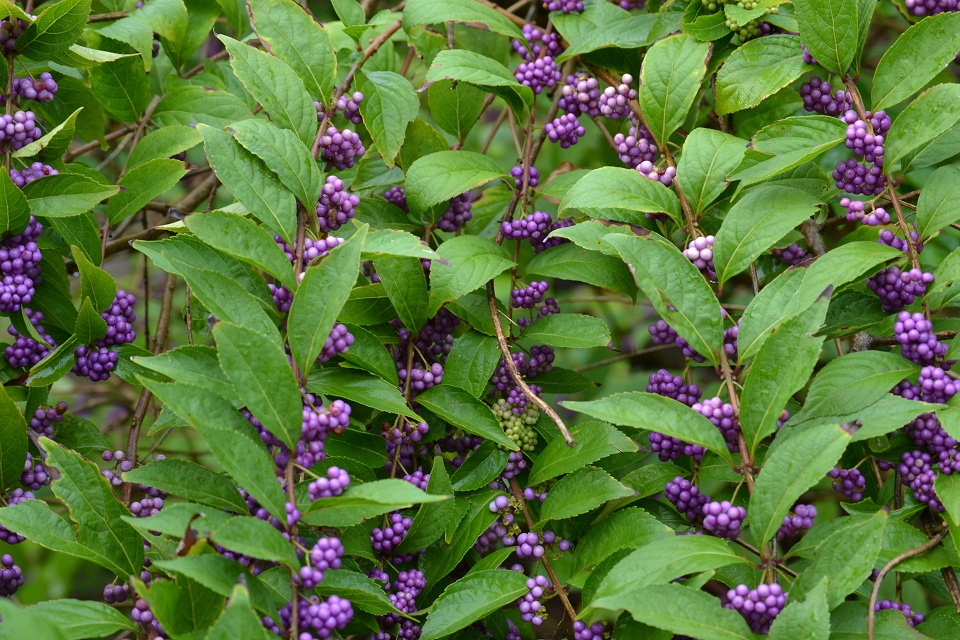
Submitted by James Newburn, Assistant Director, UT Gardens, Knoxville
Perhaps no shrub is as appropriately named as the beautyberry. This graceful multi-stemmed shrub, with arching branches, fruits in fall and is laden with clusters of berries from late September through mid November depending on the weather and how hungry the birds are. Most berries are bright purple, which is a bit unusual for a berry color in the gardening world, but there are white- and pink-berried selections as well. The one thing they all have in common is “beauty.”
The shrub flowers in clusters on new wood at almost every leaf node in midsummer. The flowers can go unnoticed because of their small size. This is then followed by the setting of fruit in the form of a small berry (technically a drupe) about the size of a BB in the same clustered formation along and encircling the stem. As the fall season progresses, the shrub will loose its leaves and the resulting branch looks like a type of funky Christmas ornament.
Callicarpa americana is our native beautyberry and can be found in the southeastern U.S. The brightly colored purple berries stand out against the muted colors of the fall landscape. If purple’s not your choice, look for ‘Lactea’ for white or ‘Welch’s Pink’ for pink berries. Or, collect all three.
Other species of beautyberry with similar characteristics are C. japonica and C. dichotoma. A white-berried cultivar with variegated foliage has recently been introduced named C. dichotoma ‘Duet’. It has a Tennessee connection as the original plant was discovered on the campus of Tennessee Tech. The green leaves with creamy margins extend interest by adding a touch of color throughout the growing season. C. dichotoma ‘Heavy Berry’ produces masses of purple berries while ‘Leucocarpa’ produces white ones.
Beautyberries are generally disease resistant, low maintenance plants. They should be planted in full sun for maximum fruit production – though plants will tolerate some light afternoon shade. Typically reaching between four to six feet tall, they are ideal for a shrub border, en masse, or as a specimen plant. Since they bloom on new wood, pruning back to between 12 inches and 18 inches in the spring may rejuvenate an unkempt plant and spur increased berry production but simply removing dead branches is all that is required. Additionally, they are an ideal source of food for birds because of their heavy berry production and dense branching, which provides great cover.
With its unique berry formation and color, the ease with which it is grown and the season of fruit production, beautyberry is a great addition to the fall garden.
James Newburn is assistant director of the UT Gardens, Knoxville. The UT Gardens located in Knoxville and Jackson are part of the University of Tennessee Institute of Agriculture. Their mission is to foster appreciation, education and stewardship of plants through garden displays, collections, educational programs and research trials. The gardens are open during all seasons and free to the public.
See http://utgardens.tennessee.edu/ for more information.
Contact:
James Newburn, UT Gardens, Knoxville, 865-974-8265